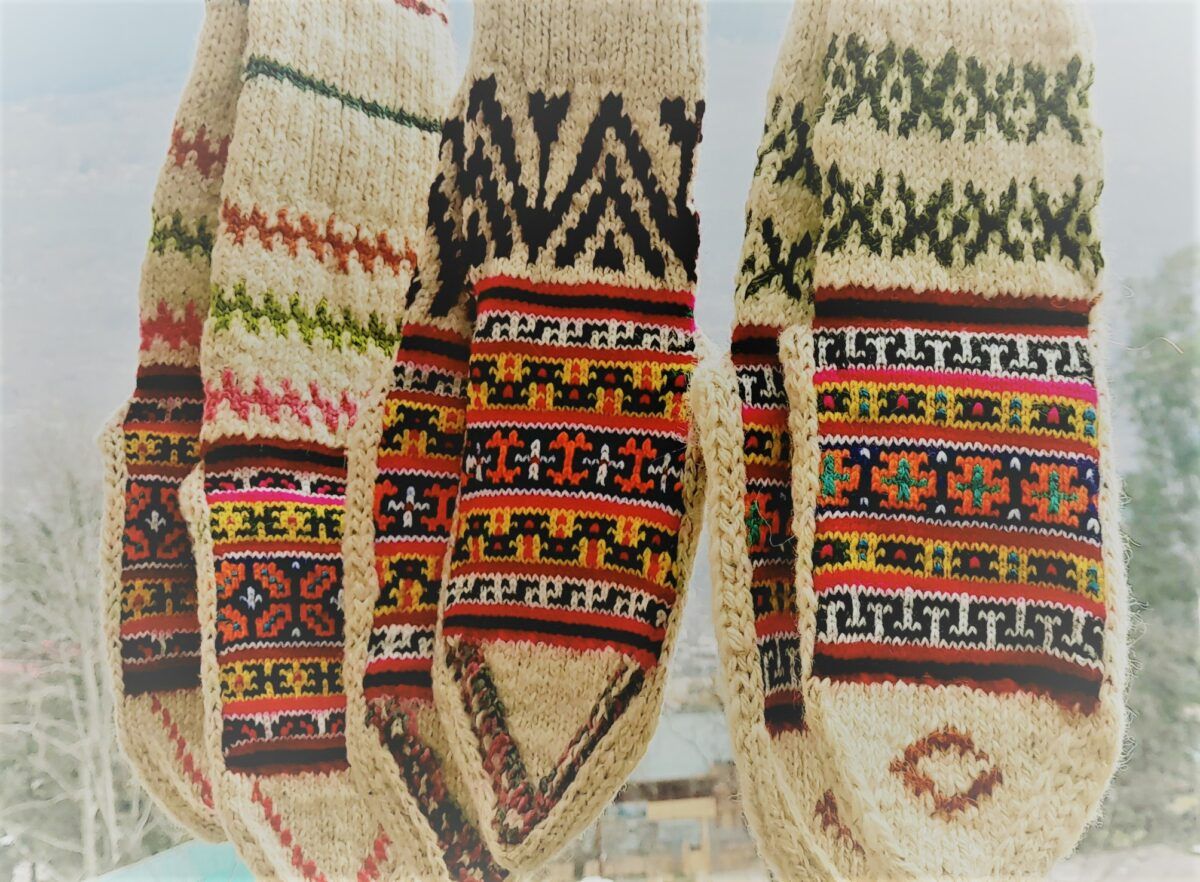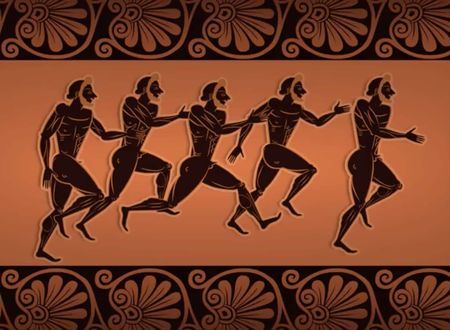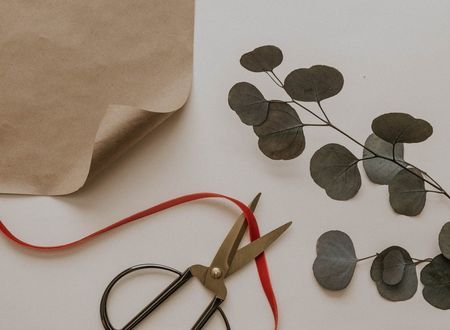The sky wears grey while yellow-brown fallen leaves encircle the naked trees. A few Evergreens remain intact amidst the chill that seems to weigh everything down. I sit huddled near a room heater, wrapped in my shawl, and gaze at the riot of colors on my feet. I am wearing a pair of Lahauli hand-knitted socks that reach up to my calf and keep my feet cozy.
The indigenous handloom of Lahaul-Spiti is one of the few remnants of a heritage that has endured the onslaught of modernization. Lahauli women have been honoring their culture by practicing this craft and passing it on to the next generation. Knitting for them was not just a pastime activity but also a part of the preparation for the long and harsh winter season when heavy snowfall would cut off the region from the rest of the world.
For the predominantly farming community, these socks were a symbol of self-sufficiency as wool was sourced from sheep reared at home. Rudimentary tools and techniques were used to shear the wool and turn it into yarn in the village itself. This pure natural yarn, called ‘pyud’ in the local dialect, is slightly rough but extremely warm. It could be found in white, black, or brown colors sheared from sheep of such colors.
Later, the natural-colored yarn was dyed artificially to get more colors. Eventually, the natural yarn, though much warmer, has been outdone by machine-made yarns. Synthetic yarns like nylon are cheaper, softer, more durable, and readily available in a variety of colors. Now a set of eight bright-colored yarns is used to knit rows of intricate geometric motifs on the cuff, forming a very colorful pattern called ‘dashi’.
These days people prefer the ‘dashi’ to be made in fewer colors. Though they may still wear them in the extreme winters, most youngsters are not interested in knitting these socks. They prefer readymade socks and no longer find it practical to wear hand-knitted socks that are more colorful, thicker, and warmer. But the Lahauli socks have a rustic charm, and it’s still customary to give them as gifts to relatives and friends during festivals such as ‘Fagli’ and special occasions.
In 2021, Lahauli hand-knitted socks and gloves were conferred with the Geographical Indication (GI) tag which identifies their specific geographical identity. This will be helpful in protecting their indigenous character and quality and promoting them as a unique product. Developments like the growth of social media, e-commerce, and the opening of the Rohtang Tunnel have given local entrepreneurs and artisans something to cheer about.
Through resilience and adaptability, this Lahauli tradition has survived the advent of machine-made yarns, factory-made alternatives, and changing fortunes and attitudes of its own people to tell the story of a bygone era when there was little material wealth and accessibility to the remote community.
The choice of bright colors perhaps symbolized the hearts of Lahaulis, who rejoiced in their work, communality, and simple lifestyle. Also, there could have been a practical reason. As nothing could be wasted, any leftover yarn was utilized in making these socks resulting in a very colorful outcome.
The happy colors of the ‘evergreen’ Lahauli socks contrast with the ashen winter atmosphere. I admire them for the warmth and relief they give to my eyes and my heart.









Comments & Discussion
4 COMMENTS
Please login to read members' comments and participate in the discussion.